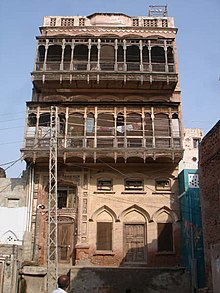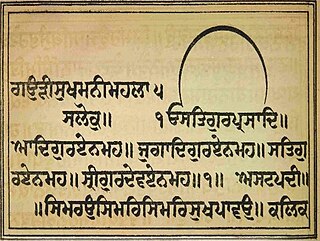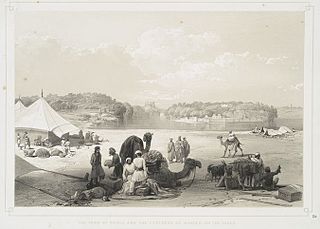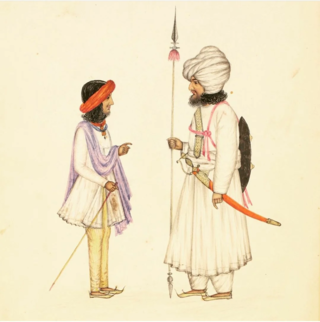See also
- Virat Kohli
- Pawanexh Kohli
- Martin Kohli
- Sunil Kumar Kohli
- Mohan Singh Kohli
- Amolak Rattan Kohli
- Manmohan Singh Kohli

| Regions with significant populations | |
|---|---|
| India | |
| Languages | |
| Punjabi, Pothwari, Hindi | |
| Religion | |
| Hinduism, Sikhism | |
| Related ethnic groups | |
| Kukhrain, Khatri |
Kohli is a Khatri clan from Punjab.
The clan is a member of the Khukhrain of the Punjabi Khatri sub-caste, the other eight members being Anand, Sahni/Sawhney, Sethi, Ghai, Bhasin, Sabharwal, Chadha and Suri. [1] They were concentrated in Bhera, Rawalpindi, Cambellpore (Chhachh) and Hazara before the partition of India in 1947. The neighborhood Kohlian da Mohalla (Mohalla Kohlian Wala) in Bhera, Punjab, Pakistan is named after the clan. [2] [ page needed ][ need quotation to verify ]
Fateh Singh Chhachhi and Sher Singh Chhachhi served under Maharaja Ranjit Singh as generals where they participated in the conquest of Pind Dadan Khan, Pindi Gheb and Jhang. [3]


Sukhmani Sahib, known under the title of Gauri Sukhmani in the scripture, is usually translated to mean Prayer of Peace is a set of 192 padas present in the holy Guru Granth Sahib, the main scripture and living Guru of Sikhism from Ang 262 to Ang 296. This Gurbani text was written by the 5th Guru, Guru Arjan (1563–1606) at Amritsar in around 1602. Guru Arjan first recited the bani at Gurdwara Barth Sahib in the Gurdaspur district of Punjab, India.

Khatri is a caste originating from the Malwa and Majha areas of Punjab region of South Asia that is predominantly found in India, but also in Pakistan and Afghanistan. The Khatris claim they are warriors who took to trade. In the Indian subcontinent, they were mostly engaged in mercantile professions such as banking and trade. They were the dominant commercial and financial administration class of late-medieval India. Some in Punjab often belonged to hereditary agriculturalist land-holding lineages, while others were engaged in artisanal occupations such as silk production and weaving.

Bhera is a city and a tehsil of Sargodha District, Punjab province of Pakistan. The city is known for wood-carved items, textiles, and certain desserts.

Kunwar Nau Nihal Singh was the third Maharaja of the Sikh Empire. He was the only son of Maharaja Kharak Singh and his consort, Maharani Chand Kaur. He was known as Yuvraj Kunwar Nau Nihal Singh. He was also known as Bhanwar Singh or Bhanwar Sa or Kunwar Sa means Respected Young Prince. Bhawar means Son of Kunwar or Son of Thakur. His reign began with the dethronement of his father Maharaja Kharak Singh and ended with his death at the age of 19 on the day of his father's funeral.

Arora is a Punjabi caste, comprising both Hindus and Sikhs. The name is derived from their native place Aror. In 712, the Arora people are said to have left Aror and started to settle in the cities of Punjab, mainly in South Punjab. However, according to W. H. McLeod, many Aroras originally came from Pothohar area.
Jat Sikh or Jatt Sikh is an ethnoreligious group, a subgroup of the Jat people whose traditional religion is Sikhism, originating from the Indian subcontinent. They are one of the dominant communities in the Punjab, India owing to their large land holdings. They form an estimated 20–25% of the population of the Indian state of Punjab. They form at least half of the Sikh population in Punjab, with some sources estimating them to be about 60–66% appx. two-third of the Sikh population.

Giani Gurmukh Singh Musafir was an Indian politician and Punjabi language writer. He was the 5th Chief Minister of Punjab from 1 November 1966 to 8 March 1967.

The Majithia family, are a family of Shergill Jat sardars (chiefs) that originate from the region of Majitha in the Punjab.
Bindra is a Punjabi surname found among [[Khatri][&] [Jatt]]s. Many Bindra Khatris were located in Rawalpindi district.
Miani is a town in Bhera Tehsil of Sargodha District in Punjab, Pakistan.
Sethi is a surname that is found among the Punjabi Khatris of India. They are a part of Khukhrain sub-caste among the Khatris which also includes the clans of Anand, Bhasin Chadha, Kohli, Ghai, Sahni, Sethi, (Sawhney) and Suri. Most of Sethis are Dual-faith Hindus. Some Sethis also follow Islam. The surname is also found among Arora. Historian Kamal Shankar Srivastava writes that all Khukrains including Sethis were originally found near the banks of Indus and Jhelum river especially in the towns of Pind Dadan Khan, Peshawar and Nowshera.
Sahni, Sawhney, Sahani, or Sahney is a Punjabi Khatri surname found among the Hindus or Sikhs of Punjab, India.
The Khukhrain or Khokhrain is a sub-group composed of eight clans of the Khatri caste that originally hailed from the areas of the Salt Range.
Chopra is a Ror and Punjabi Khatri surname. They belonged to the Barah-Ghar / Bahri family-group of the Khatris, which also includes the clans of Dhawan, Kakkar, Kapoor, Khanna, Mehra, Malhotra, Sehgal, Seth, Tandon, Talwar, and Vohra.

Punjabi Muslims are ethnic Punjabis who are adherents of Islam; they constitute the largest religious subdivision within the Punjabi people with a population of more than 112 million. They are the third-largest ethnic group among Muslims, globally, after Arabs and Bengalis.
Kochhar or Kochar is a surname that is found among the Khatri landowner communities of India.
Dheer is a surname found among the Brahmins and Khatris of Punjab. The Dhirs of Kapurthala are descended from Baba Mahya, who was the Guru (teacher) of Guru Amardās of the Sikhs, and is still revered at Dhir weddings. The word "Dhir" translates to brave. Khulasat-ut-Tawarikh, a persian language book about history of India and Mughal Empire was written by Sujan Rai, a Dhir Khatri of Batala in Gurdaspur. Dhirs of Batala moved there before the end of Akbar's reign as soldiers. Bhai Bula, a Dhir Khatri was a dedicated Sikh of the time of Guru Arjan Sahib. His son, Dayal Das Dhir was martyred during a battle against the Mughals in Amritsar.
The Khokhran Khatri have eight clans, namely Anand, Bhasin, Chadha, Ghai, Kohli, Sabarwal, Sawhney, Sethi, and Suri.